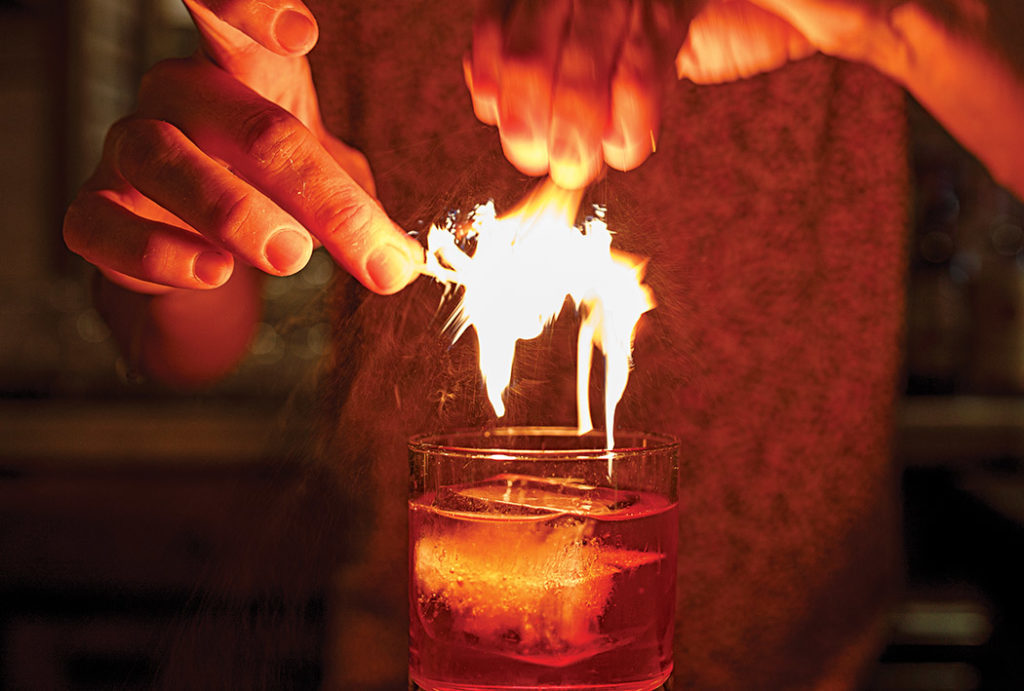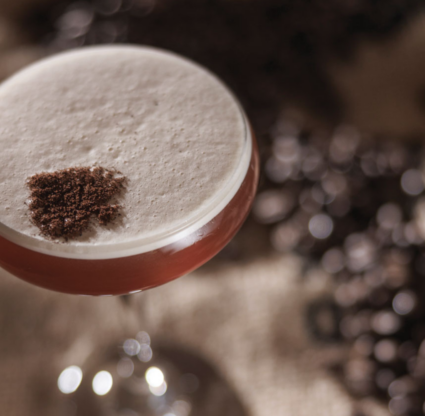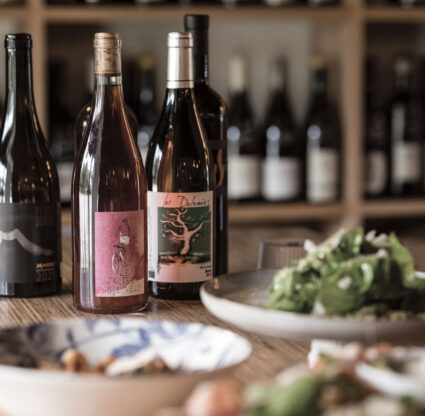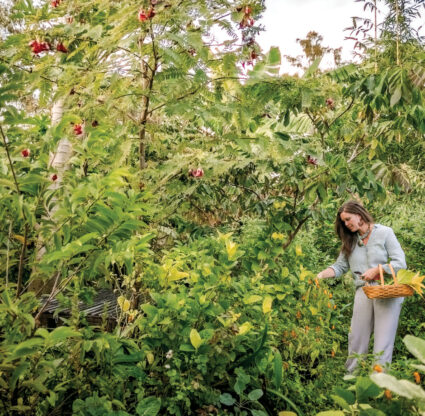Stan Worrell was in his 20s, working on a crabbing boat in Alaska, when he found himself gravitating once again toward hospitality.
The Naples native had worked in the business here during season, but he had gone looking for a more lucrative job during the summers and a friend had told him about crabbing.
“I walked the docks and found a job there commercial fishing for salmon,” he says.
It wasn’t long before—in addition to grueling four-day spans on the water—he took up the cooking duties, as well.
“They had this kid cooking, and it’s like, I’m out there for 12 hours a day and I’m getting a grilled cheese that’s burnt on the outside, the cheese isn’t melted and the ham in it’s cold,” Worrell says. “And I’m like, ‘Turn the heat down, dude.’ So I looked at my skipper, like, ‘I have cooking experience. Mind if I cook next trip?’”
Worrell cooked meals for the crew for the next four years. Admittedly, it was mostly crab and salmon, but occasionally they’d trade for elk at a village. And once they bagged a deer.
“We cooked every part of it: heart, liver, ribs. Those were good days,” he says.
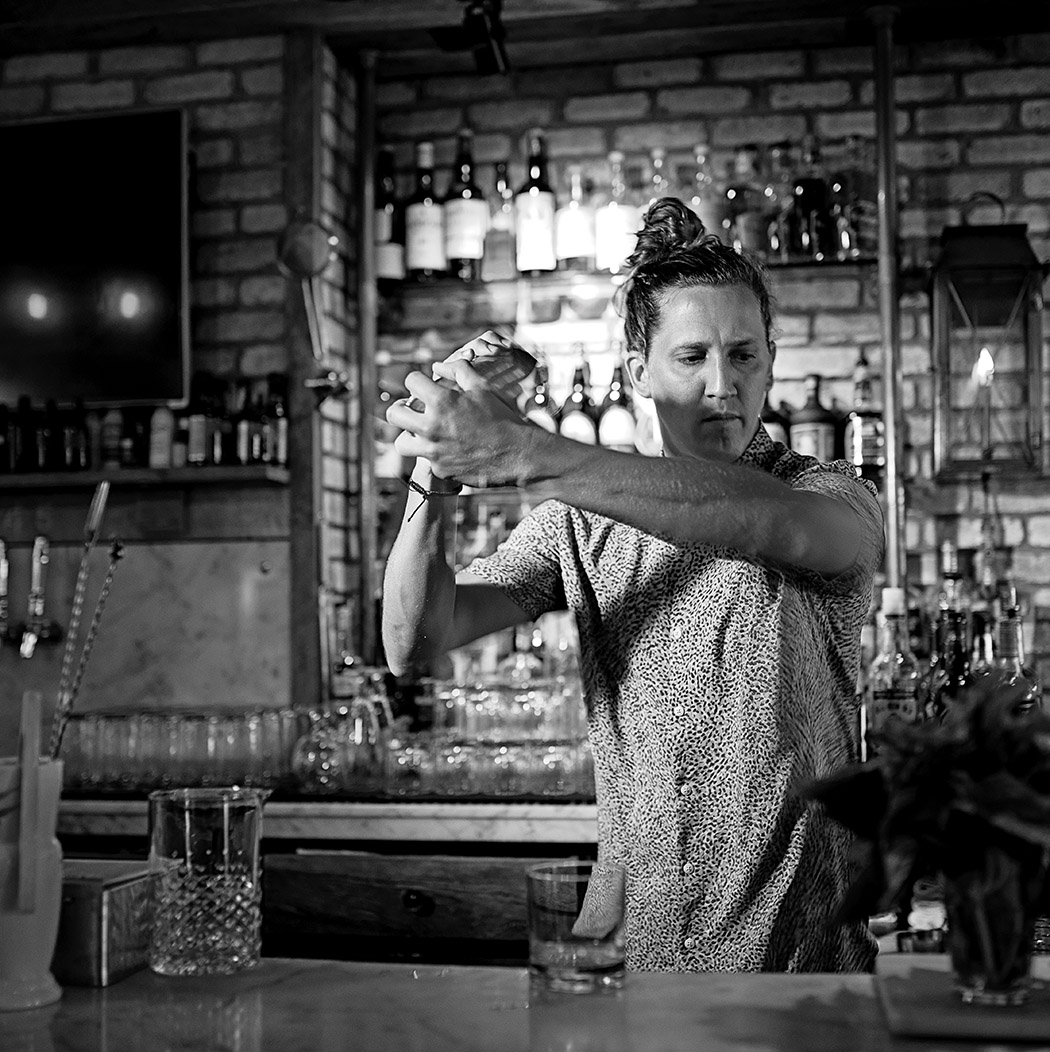
With most meals, he also prepared some kind of pasta dish. These he concocted after learning the art from his boss Chef Vincenzo Betulia when he had worked at Campiello in Naples.
“You can give someone 10 ingredients and they’ll throw everything in the pot all at once,” Worrell says. “He really taught me how to extract the flavor out of every ingredient, and that’s held true to me in cocktails as well.”
This surely has a lot to do with why he’s today known as arguably the premier mixologist in Southwest Florida.
Worrell had spent four years moving between that boat in the summers and Campiello during season, then went on to work a summer in Nantucket and another in San Diego. When he learned that Betulia was opening a cocktail bar to go next to his restaurant, Osteria Tulia, on Naples’ Fifth Avenue South, Worrell found his way back to Naples full time.
“Stan is kind of a free spirit and a wanderlust,” Betulia says. “He has a lot of energy, a lot of passion for whatever he does, and when he puts his head to something, he really excels at it.”
The only problem was, Worrell didn’t have any bartending experience. But Betulia knew he was a hustler from his days at Campiello.
“We thought, ‘You know, we’re going to give this guy a chance,’” Betulia says. “He didn’t have a lot of bartending experience, but we thought he could really excel with his mind.”
Bar Tulia opened in December 2014 and Worrell has been there since, learning on the job to become a mixologist whom regulars and newcomers request for their custom creations or the Bar Tulia classics.
“I did not know anything about that world five years ago,” Worrell says, laughing. “I drank Budweiser and dry whiskey.”
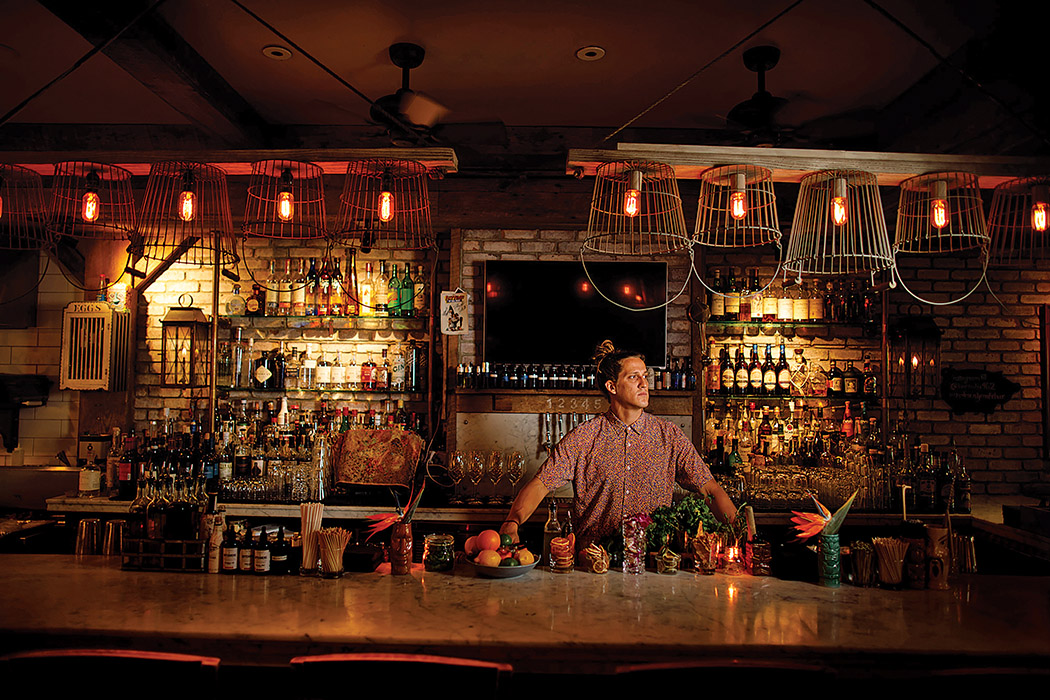
At 32, Worrell is the oldest of six children, the youngest of whom is just 10. His family, including his parents, still live here in Naples, which is a big reason he hasn’t ever truly left. He lives downtown, near the hospital and within biking distance to Bar Tulia. So even when he’s off work, he’s around: skating, playing volleyball on the beach. During an hourlong interview, at least a dozen passersby, either from the bar or walking downtown, say their hellos. Maybe it’s the man bun they recognize, or the fun floral shirt. That or his easy air, at once laid-back and confident.
“The neighborhood,” Worrell muses, waving to another guy biking past.
A Naples High School grad, Worrell got his start in hospitality at the age of 17. A friend told him what he could make bussing tables at Café & Bar Lurcat, so he left DeVoe Cadillac where he had been washing cars.
Soon he was running tables and bussing them, later working as a barback (assistant to the bartender) for a bit.
“It was pretty good in those days,” he says. “This was before Mercato, so it was flooded down here.”
A 17-year-old could make $60 to $80 a night, which was nothing to laugh at.
“This was before the economy crashed, too, so people were drinking Cristal and dunking their doughnuts in it, knocking their glasses over,” he says. “It was silly.”
He worked a short time in the kitchen before he realized there was more money to be made serving. But then he went to Campiello, where he worked under Betulia.
After serving there for a time, Worrell got bored again, so he asked if he could go back to the kitchen.
“I thought they would put me on the salad station, you know, the lowest-end station, and instead he put me on pasta. … They’re cranking out 700 plates a night doing probably 350 (of them) pastas, so I was like, ‘All right.’” Worrell says. “He said, ‘You’re a hustler, you got it.’ It was probably three or four months before I felt like I had a handle on it.”
But the pay conundrum would flare up again. At the end of the week, Worrell’s check was so much lower without tips that he felt like he’d worked for free sometimes. So, he went back to serving, again.
When Betulia hired Worrell to work at his craft cocktail bar, Worrell finally got the best of both worlds. He could create cocktails, experiment with flavors and hustle behind the bar while earning the tips that come with serving and building a rapport with customers.
He just had to learn how to do it first.
When Bar Tulia first opened, a group of bartenders from Boston came down to work it. It was under them that Worrell got his first lessons in craft cocktails.
“Once you learn the classics, you learn to diversify from those,” Worrell says. “I learned all about flavor profiles, and they really taught me how to portion well. A lot of people don’t understand, for example, the acid-to-sugar ratios and how they make a balanced flavor.”
Betulia is a chef and doesn’t have any bartending experience himself. But watching Worrell under the Boston crew, he saw him taking in the basics and applying his work as a cook.
“Well, it’s the same thing you’re dealing with when you’re paying attention to craft,” Betulia says. “You have salty, you have sweet, you have sour, you have bitter, and you put everything together to make a drink.”
Betulia watched Worrell’s work ethic kick in as all the cooking knowledge and on-the-job training coalesced.
“His expertise is really in tiki cocktails,” Betulia says. “Rum-driven, fruit-driven drinks. He finds his inspiration through childhood or his family, what they did or didn’t eat, and what they liked. And sometimes on his travels he’ll see something and get inspired.”
Worrell is a fan of whiskey drinks and tiki-inspired cocktails.
“When it comes to whiskey, I like straight rye whiskey cocktails, straight spirits along the Manhattan line,” he says. “Things with amaros and vermouths and rye and bitters.”
But on the rum tiki side, there’s a lot more at play.
Take, for example, the Sexpert, a pisco-based cocktail.
“It’s a Peruvian brandy, essentially,” he says. “It’s like a rum to me, kind of grapey in flavor.”
The drink starts with Pisco 100, then Worrell adds Ford’s gin, some lemon and velvet falernum.
“Falernum is an island-spice lime syrup, essentially,” he says. “We make our own.”
The falernum is the most intensive part of this cocktail, but patrons don’t have to sit around to watch it. Instead, the staff makes about a gallon of syrup at a time because it’s better than the store-bought stuff and makes for a true craft cocktail.
“It’s got lime peels, orange peels, ginger, cloves, toasted cinnamon, toasted anise, toasted almonds and almond extract,” Worrell says. “You soak it all in an overproof rum—we use a Jamaican style called Wray & Nephew—and soak it for two days, then strain it out and add sugar to it.”
After all that, the Sexpert calls for only half an ounce of it. Next, the drink uses a passion fruit puree, also done in-house, and Burlesque Bitters, which is relatively tart.
The finished drink is golden yellow in color, topped with a red rose petal.
“It’s a complex drink,” Worrel says. “The red petal really makes the color pop.”
It’s served up in a coupe glass, like a rounded martini glass.
“I’m thinking of ordering Kama Sutra playing cards for the coasters,” Worrell says. “I think that would be fun.”
Soon, regulars were coming in to request drinks that Worrell had thought up himself.
“He really came into his own,” Betulia says. “All we did was give him a platform.”
Bar Tulia was onto something relatively new in Naples, where trends in food and beverage tend to reach a bit later.
Frosés, for example, had been a thing in NYC and Miami for some time, but Naples is just now learning about how wonderful a wine slushy can be.
Worrell estimates it was about two years before he was comfortable behind the bar and fully experimenting with new drinks that would soon make it to the board of classics and the rotating seasonal menu that Bar Tulia updates as many as three or four times a year.
Recently, he went into work early for a spitball session with the staff, where they all brainstormed ideas for new drinks they’ve been playing around with.
Worrell, who recently got back from a trip to Baton Rouge, has seen a trend toward lower-ABV (alcohol by volume) drinks, which let the patron sip away all day without getting too buzzed.
“A guy came in recently asking for a 24 percent vodka, and vodkas are usually like 80 or 40 percent. It’s so people can drink more, longer,” Worrell says. “I mean, I also know people who have eight Manhattans, too, so.”
Worrell has also seen a resurgence in amaros, which are more common in Italy as an after-dinner drink to promote digestion.
“Those are lower-ABV, too,” he says.
So, during the brainstorming session, the staff got together to test new creations.
“We all kind of taste and say, ‘Well what do you think it needs?’” Worrell says. “We’ll make a cocktail 10 different ways before we’re like, ‘OK that’s good.’ Then we try to come up with fun names.”
You’ll spot drinks like The Mockingbird, a rum blend, or Papi Cholula, tequila topped with smoked sea salt, on the menu year-round.
Unlike some of the busier bars or restaurants around town, Bar Tulia doesn’t batch its cocktails, meaning if you order something, it’s made nearly in its entirety from scratch, right in front of you.
That doesn’t include, of course, the different syrups or bitters that the bartenders have to prep days and sometimes weeks in advance. But even those additions are made in-house—they just take a bit more time.
And, of course, if you come in wanting something like the one drink you had at a rooftop bar in Brooklyn, Worrell is game to recreate it, or to whip up something for your palette alone.
“It’s nice when you put out a cocktail you’ve never made before and people are like, ‘Wow, that’s really good,’” he says.

